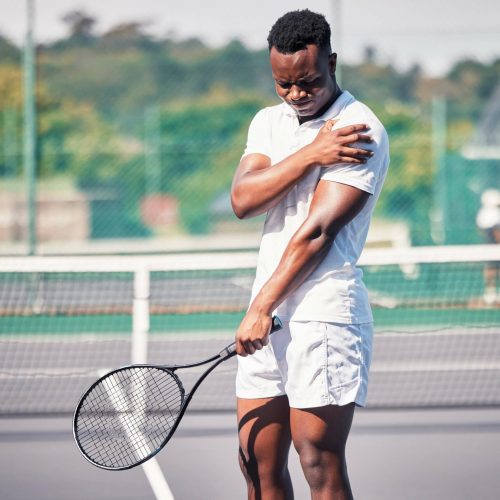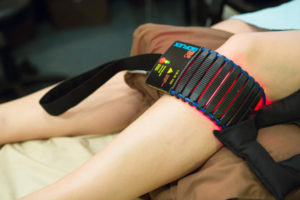Whether you’re a regular competitor or someone who just loves to hit the pickleball court in the morning before getting your day started, there’s nothing worse for an athlete than a nagging sports injury. If you have chronic shoulder, knee, or hip pain and just want to get back to doing what you love, you’ve probably tried everything you can think of to relieve your pain. We’ve heard this story time and time again and are here to help. It’s what we do. We’re in the business of pain relief by treating the complete cause of your persistent sports injury, not just the symptoms. Read on to learn more about how we’ve helped countless athletes, young and old, with our noninvasive, drug-free, and non-surgical treatments right here in our Scottsdale pain relief clinic.
Scottsdale is a great place to participate in all sorts of recreational activities year round. With our gorgeous weather and more than 200 golf courses alone in Scottsdale, people travel from all over the world to enjoy our beautiful city. If you’re lucky enough to live here, you know better than most that golf is just one of the many sports we enjoy. Unfortunately, you also know that too many golfers, tennis players, pickleball players, and more must put their games on hold as they nurse nagging pain in their shoulders, knees, or hips. You may even be one of those suffering from a chronic sports injury yourself. This pain is usually due to a specific injury or repetitive stress from the sport you love so much. If the pain persists, it’s likely an unresolved tendon or bursa injury. Let’s talk about how our treatment differs from most.
How Sports Injuries Progress

Before we dive into the solutions, let’s first make sure we understand the problem. The typical progression of these types of sports injuries (especially in the shoulders and hips), whether it’s sustained by a 60 year old on the golf course or a 16 year old on the football field, starts with tendonitis, then moves to bursitis, capsulitis (such as frozen shoulder), and lastly if left untreated progresses to arthritis.
- Tendonitis – Your tendons are the connective tissue at the ends of the muscles that attach to the bones. When this tissue becomes inflamed or irritated, this is called tendonitis. Due to the tendon’s makeup and positioning, it can be resistant to exercise therapy and pain management.
- Bursitis – A bursa is a fluid-filled sack that is used as a cushion between two tissues, near the tendons in large joints in your body, like your shoulders, hips, and knees. When the bursa becomes irritated or inflamed, this is called bursitis.
- Capsulitis (Frozen Shoulder) – When connective tissue that surrounds the joint, called the capsule, becomes inflamed and over time leads to adhesions of the capsule that significantly restricts ranges of motion.
- Arthritis – There are many different types of arthritis, the most common being osteoarthritis, which is caused by aging or overuse. Osteoarthritis results in the breaking down or degeneration of cartilage.
Without proper treatment, or with the band-aid type treatments that many practitioners administer, a sports injury will likely not improve or will only improve temporarily. Then, once it lasts for longer than three months, you’ve joined the 20% of Americans who suffer from chronic pain. Here at LaserTech, we’ve seen people suffer for many years, trying exercises and different types of pain management, with little to no sustainable results or relief. These conditions only become more complicated the longer they last and the further they progress. They typically have multiple causes and require a complete cause approach. This is why treating the symptoms alone will only provide temporary relief, which we refer to as band-aid care.
Using a shoulder rotator cuff tear or injury as an example: The pain you feel when you’ve injured your shoulder is because the tendon has less circulation and as described above, it has a hard time healing by itself if there is any continued motion. Any damage (small or large) usually stimulates a local inflammatory response. If it doesn’t heal shortly, the body will develop scar tissue in the area. If this persists long enough, the body can deposit calcium over the tendon called Calcific Tendonitis. The scar tissue and calcium can make exercise even less effective and more painful. Over time, the tendon tends to degenerate further. The progression continues all the way to the joint. This is when traditional pain treatments fail.
How LaserTech Pain Treatment is Different

We understand chronic pain. We understand how it progresses, but beyond that, we understand the impact it has on your life. From carrying groceries or playing your grandkids to hoisting up that coveted pickleball trophy, we get it. Our goal is to get you back to doing what you love. If you’re not getting the relief that you deserve from traditional treatments, we can help. Our focus is on a complete cause treatment plan using our integrated treatment technologies that successfully go after the full disease.
- Damage
- Inflammation
- Circulation
- Scar tissue and or calcification
- Return to normal function
Our low level laser technology is fantastic at healing damaged tissues when one can’t heal themselves. We have saved a number of patients from surgery with our multiple healing lasers. We can regulate inflammation without side effects and more importantly without the use of addictive pain medications or painful injections. We can increase needed circulation to those tendons that have decreased range of motion. We have radial pulse wave technology that can minimize the scar tissue and calcification, and we know how to promote needed motion and function to the affected areas so that you have a great potential for normal function and sustainable relief.
Every case is different. Your pain is not the same as the next persons’. It shouldn’t be treated the same. That’s why we offer a free consultation so that our pain relief doctor, with over 30 years’ experience, can determine your specific needs. Dr. Zimmerman will sit down with you, ask you several questions and look through your medical history. If he can’t help you, he’ll be up front with you and let you know. If he can, he’ll develop an individualized treatment plan just for you, determining the cause of your condition and provide you with a noninvasive, complete cause pain relief plan to get you back in the game!




